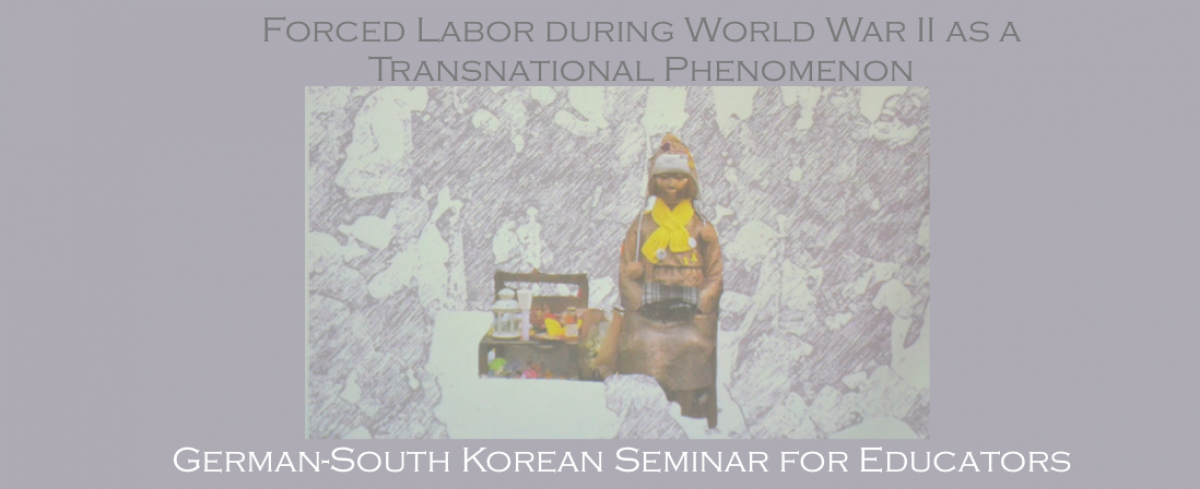Please click on this symbol ![]() on the map to open infos on all sights:
on the map to open infos on all sights:

Sungam History Museum in Ansan
The museum is located on an island, southwest of Seoul. It is placed on the former grounds of the historic “educational institute”, which was established in 1941 by Japanese colonizers. It was aiming at excluding socially deprived from society and giving them a vocational training. These boys were snatched from the streets and deported to this island. In fact, the living and work conditions were like force labor. The boys had to work under harsh conditions in agriculture or salt mines and were exposed to violence.
After the war the institute continued its work and was taken over by the South Korean state. It lasted until 1982.
The museum is an initiative of local activists, historians, and artists. There is no official support by the national government.


Statue of Peace
The Statue of Peace – also known as Statue of Comfort Women or Statue of Girl – commemorates the female victims who were forced into sexual slavery by the Japanese military during the Second World War. It depicts a barefoot young girl with short hair, a bird on the right shoulder and with clenched fists resting on her legs. Next to her is an empty chair and on the ground there is a shadow of the girl. The shadow depicts an old woman and represents the hardship the victims suffered through all times.
The bronze statue of Peace was built by the couple Kim Seo-kyung and Kim Eun-sung and on December 14, 2011 it was placed in front of the Japanese embassy. Initially, the couple had planned to create a memorial stone for the 1000th Wednesday Demonstration, which could not be realized because of Japanese opposition. The latter Statue of Peace also resulted in protest from the Japanese government and eventually helped reopen talks about comfort women and an official recognition of these crimes. More than 48 statues have been erected in Korea and more than seven similar statues worldwide.

Stepping Stones
The civic organization Stepping Stones for Peace had Gunter Demnig install stepping stones for Korean victims of forced labor under Japanese colonial rule right by the Statue of Peace in spring 2015. The organization continues research on the victims and works on establishing more stepping stones. Furthermore, the organization set up stepping stones at three locations on Hokkaido, Japan, where Korean workers suffered from forced labor.
Wednesday Protests
The Wednesday Protests demanding Japan to redress the Comfort Women problems started in 1992 and was ever since held every Wednesday at 12:00 pm. The protest is organized by the Korean Council for the Women Drafted for Military Sexual Slavery by Japan and aims at acknowledging war crimes and obtaining an official apology from the Japanese government because of the sexual slavery imposed on female colonized under Imperial Japan rule during the Second World War. On January 8, 1992 the first demonstration was held when the Japanese Prime Minister Kiichi Miyazawa visited Seoul. On December 14, 2011, the 1000th Wednesday Protest was held and the Statue of Peace unveiled.
Protesters are demanding from the Japanese government:
- Admit the Japanese military sexual slavery system as a war crime
- Disclose official documents
- Deliver an official apology
- Pay reparations to the victims
- Punish those responsible for the crimes
- Record the sexual slavery system in the history textbooks
- Erect a memorial monument and build an archive
War and Women’s Rights Museum
The War and Women’s Rights Museum is located at 39-13 Seongsan-dong, Mapo-gu, Seoul. It is run by the Korean Council for the Women Drafted for Military Sexual Slavery by Japan, which also organized the Wednesday Protests at the Statue of peace in front of the Japanese embassy. The museum focuses on the history of “comfort women” but also exhibits other forms of violence against women during periods of war. It is also a space to remember the victims.
Besides running the museum, the Korean Council for the Women Drafted for Military Sexual Slavery by Japan, which was founded in November 1990, also provides counseling services and support for the survivors at their homes; they run a shelter for lonely survivors; they carry out campaigns such as teaching in schools across the country or supporting erecting the peace monument at other places in the world; they carry out research activities; they took the Japanese sexual slavery issue to the UNHRC in 1992 and continue to report on the progress; they hold solidarity activities with organizations in North Korea and other Asian nations; and they were represented in the Women’s International War Crimes Tribunal that was held in Tokyo in 2000.
Website: http://www.womenandwarmuseum.net/contents/main/main.asp








